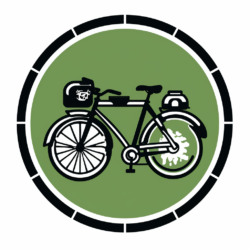Introduction
Cycling to work is an eco-friendly, healthy, and enjoyable way to commute. However, selecting the best route can make all the difference in ensuring a smooth and efficient ride. When planning your bike commute, you might find yourself torn between a traffic-free route with fewer traffic lights or a more direct path. In this article, we’ll help you weigh the pros and cons of both options and guide you through choosing the perfect route for your daily ride.
Understand your priorities
Before diving into route planning, take a moment to consider your priorities. Are you more focused on speed, safety, or a balance of both? Here are some factors to keep in mind:
Time Efficiency: Direct routes usually offer the quickest way to reach your destination.
Safety: Traffic-free paths and routes with fewer traffic lights often provide a safer riding experience.
Enjoyability: A pleasant, traffic-free route can make your daily commute more enjoyable.Fitness Goals: If you want a challenging workout, consider the terrain and elevation changes in your route planning.
Research traffic-free routes
To find traffic-free routes, use online mapping tools and smartphone apps designed for cyclists, such as Google Maps, Ride with GPS, and Strava. These tools take into account factors like bike lanes, road conditions, and traffic volume when suggesting routes. Additionally, consult local cyclists, bike clubs, and bike shops for their recommendations on safe, traffic-free routes.
Compare travel times
After identifying potential traffic-free routes, compare their travel times with the more direct options. While direct routes are usually faster, the benefits of a traffic-free route—improved safety and enjoyability—might outweigh the time difference. Be prepared to strike a balance between these factors when selecting the best route for your commute.
Test ride your options
Once you’ve narrowed down your route options, it’s time to test them out. Ride each route during non-peak hours to gauge traffic, safety, and overall satisfaction. Keep in mind that conditions can change with the seasons and weather, so be prepared to make adjustments as needed.
Monitor your progress
After settling on a route, track your rides using a cycling app or fitness tracker. Monitoring your progress will help you identify trends and make improvements, whether that means adjusting your route, altering your departure time, or making other changes to optimize your commute. Sharing your experiences with fellow cyclists can also contribute to the local biking community’s collective knowledge.
Conclusion
Deciding between traffic-free and direct bike routes for your daily commute requires considering time efficiency, safety, and enjoyability. By understanding your priorities, researching traffic-free routes, comparing travel times, test riding your options, and monitoring your progress, you’ll be well-equipped to find the perfect balance for your daily ride. So, gear up, hit the road, and enjoy the benefits of commuting to work on two wheels!
